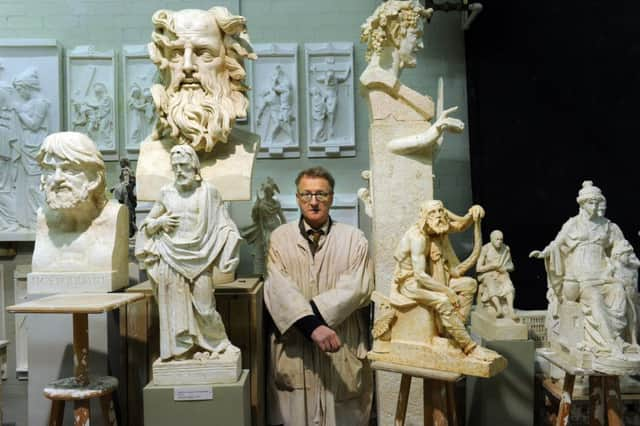Edinburgh architects' effect on skyline compared to ISIS
This article contains affiliate links. We may earn a small commission on items purchased through this article, but that does not affect our editorial judgement.


Alexander Stoddart, Her Majesty’s Sculptor, said that there was “almost a reflex” amongst designers to ruin Edinburgh.
Like ISIS, modernist architects were devoted to “consistent and willful desecration” of places of peace and harmony according to Stoddart.
Advertisement
Hide AdAdvertisement
Hide AdStoddart particularly singled out recently aborted plans to modernise Thomas Hamilton’s neoclassical Royal High School, calling them “an outrage.”
The artist made the comments at the unveiling of his latest creation, a bronze sculpture of William Henry Playfair, outside the National Museum of Scotland.
Stoddart slammed modern architecture and said his statue was his way of saying thank you to the architect who made Edinburgh the “Athens of the North.”
ISIS have destroyed almost 30 ancient religious sites in Iraq, Syria and Libya since 2014.
Stoddart said: “Modernism is a branch phenomenon of ISIS.”
“Peace and rest are promulgated by classical buildings. Modernism, on the other hand, likes conflict and action. Like all dynamic creeds, it likes nothing better than a fire in a planned city.
“It gives the potential for perpetual revolution. Even the buildings they build are designed to be pulled down after 20 years.
“The plotting that goes on is unbelievable, but those who oppose are decried as paranoid, or conspiracy theorists.
Advertisement
Hide AdAdvertisement
Hide Ad“Playfair was one of the greatest architects of the modern world. He made the Athens of the North begin to look very like the Athens of the North.”
Playfair designed many of the most iconic buildings in Edinburgh, including the National Gallery of Scotland and the Royal Scottish Academy.
Edinburgh World Heritage provided part of the funding for Stoddart’s statue of the architect and Adam Wilkinson, the charity’s director, echoed his praise Playfair.
He said: “His buildings have played – and continue to play – a critical role in how the world sees Edinburgh.
“The statue asks people to pause and consider the man, his buildings and their role in the city.”
Stoddart began working on the Playfair statue six years ago.
He explained that the statue was a way of bridging the gap between those in Edinburgh today, and historical figures.
Advertisement
Hide AdAdvertisement
Hide AdHe said: “Really cultivated civilisations have a constant dialogue between the living and the dead. A monument is a means of transmitting messages to the dead; it also transmits messages to those not yet born.
“It is not dealing with the world of reality TV and the Kardashians, put it that way.”
Edinburgh’s World Heritage status was said to be under threat last autumn over “deeply worrying” concerns about the quality of new developments in the city.
Mechtild Rossler, the director of the World Heritage Centre said in a letter to the UK government’s Department of Culture, Media and Sport that she was very concerned about urban conservation in the city.
She wrote: “I would like to express the World Heritage Centre’s strong concern about the state of urban conservation in Edinburgh, due to the Royal High School project and other projects related to urban development.
“The quality and pervasiveness of development projects being pursued without due consideration for conservation is deeply worrying.”
DOWNLOAD THE SCOTSMAN APP ON ITUNES OR GOOGLE PLAY